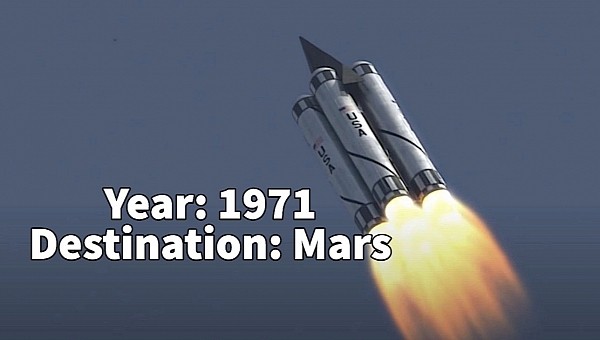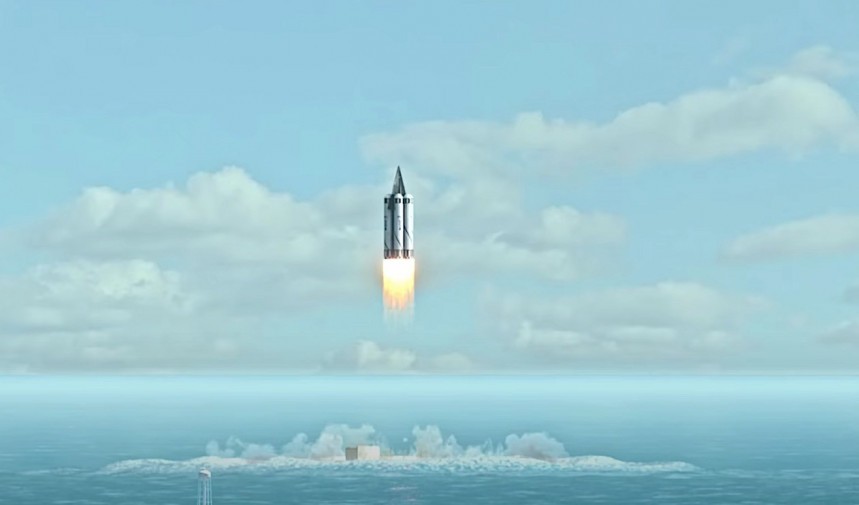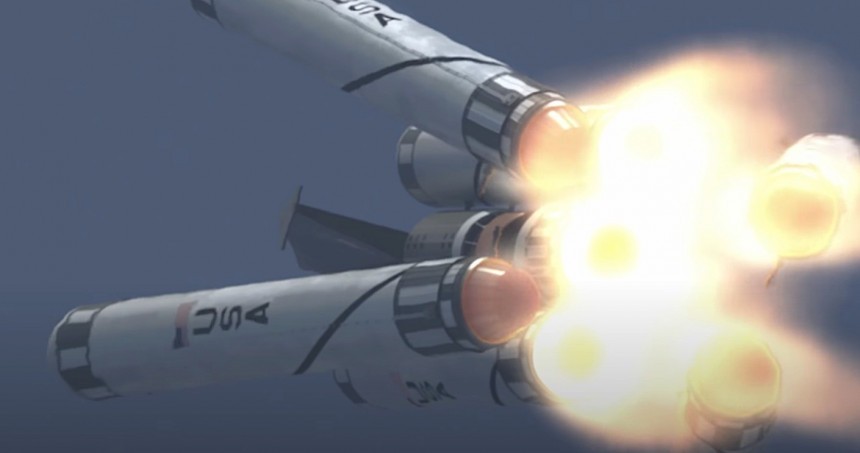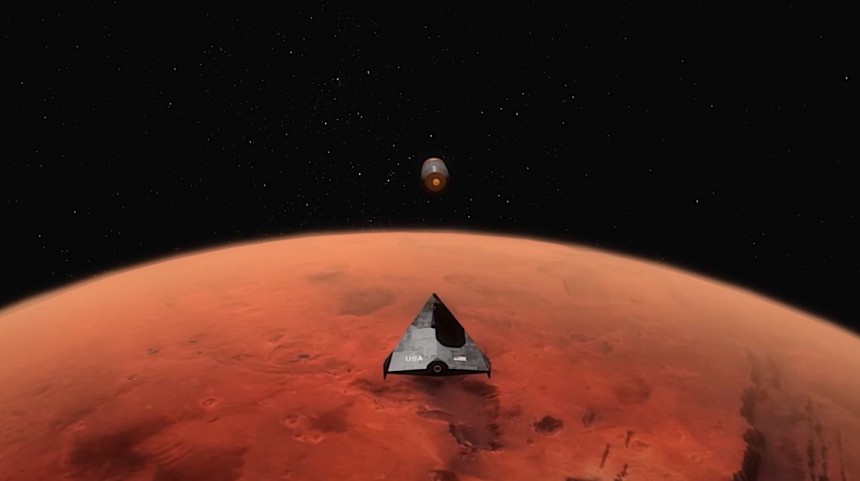Earlier this month, NASA announced the creation of the Moon to Mars Program Office. It is, if you like, the agency's first official commitment to taking our species to the Red Planet. But we’ve known Mars is a prime target for space exploration for years now. Someone even planned a full mission there back in the early days of space exploration. This is what it was all about.
Space exploration as we know it today was born in the 1960s. The rivalry between the U.S. and the USSR was the driving force behind it, as both nations were looking to gain the upper hand over the other.
Since Mars is too far away to be of any consequence as a sort of higher ground, both nations focused their attention on the immediate Earth orbit and the moon that spins around that planet. So both that decade and the 1970s that followed were dedicated to reaching these two places.
It was back in 1962 when President John F. Kennedy delivered his famous “we choose to go to the Moon” speech, but even before that, NASA, founded in 1958, knew the Moon was just a stepping stone to something much greater. If fact, two years before the Kennedy remarks, it came up with a mission study to reach Mars. And not without a crew, but with a full team of Americans.
Back in 1960, the Lewis Research Center (presently, the John Glenn Research Center) devised and presented something aptly called the American manned Mars expedition study. It wasn’t a very detailed one in terms of hardware to be used, but pretty much everything else, down to timing, was put on paper.
The study relied on a nuclear thermal-powered spacecraft that was to be assembled in low-Earth orbit. A complement of seven astronauts would be taken there by means of rockets, board the ship, and head out for Mars.
Once in orbit around the target planet, the ship would lower a lander onto the surface, allowing the humans to go about their business. Since this wasn’t envisioned as a one-trip deal, the team would then use the lander to climb back into orbit to meet with the spaceship and head back home.
The calendar of the mission was pretty simple and straightforward. In May 1971, the ship would depart Earth, heading out into the void for the next 259 days. The crew of the mission was to then spend an additional 490 days on the surface of the planet, doing their thing. They would then set a course for home, journeying an extra 248 days to get here.
In all, the mission would have lasted 997 days, which is close to three full years. For that to be sustainable, the spacecraft would have needed to carry with it not only tens of tons worth of supplies, but also means of transport for the surface, habitation modules, and so on. So the ship itself was essential for the success of the trip.
Sadly, the study itself did not go into the specifics of this hardware, other than it should use nuclear thermal propulsion and be capable of carrying seven people. But a brainiac of that era, used to designing spacecraft concepts, did.
His name is Philip Bono, a man who was decades ago on the payroll of companies like Boeing and the Douglas Aircraft Company. We’ve seen some of his work before, in the form of the Reusable One-stage Orbital Space Truck (ROOST), the Reusable Orbital Module, the Utility Shuttle (ROMBUS), or the Saturn Application Single Stage to Orbit (SASSTO).
For this Mars mission, Bono cooked up something some people today refer to as the Mars Glider. Designed like an aircraft with a delta-wing configuration, it was 125 feet (38 meters) long and had a wingspan of 95 feet (29 meters).
The Mars Glider would go on top of a central booster that would remain attached to the ship all the way to Mars and back. Bono designed the thing to depart Earth in the usual fashion, from a launch pad, and not be assembled in space as the NASA study envisioned.
To help it generate enough power to defeat Earth’s gravity, no less than six additional boosters would have had to be placed around the core stage. Powered by liquid oxygen and liquid hydrogen, they would insert the ship onto a Mars-bound trajectory, with the core stage being responsible for accelerating the ship to its destination.
Once there, the core would remain in orbit, while the Glider itself would head down for the surface, carrying with it a crew of eight people and 40 tons of supplies and equipment to keep them going for a while. Once the mission was over, a part of the Glider would become a sort of a launch pad, sending the other part back into orbit to be paired with the core stage and head back home.
Like many of Bono’s ideas, the Mars Glider never came to be, and neither did the NASA 1960s plan to put human boots on Mars within a decade. Because no sketch of the actual Mars Glider exists, it’s very hard for us to imagine what the ship would have looked like going about its mission.
Luckily, as is the case with many other spaceship concepts that were never made, modern technology allows us to animate such daring missions. You can see Bono’s ship go about its journey as per the plan created by the Lewis Research Center in the video below, put together by space animation specialist Hazegrayart. You know, just to get an idea of a reality that never came to be.
Since Mars is too far away to be of any consequence as a sort of higher ground, both nations focused their attention on the immediate Earth orbit and the moon that spins around that planet. So both that decade and the 1970s that followed were dedicated to reaching these two places.
It was back in 1962 when President John F. Kennedy delivered his famous “we choose to go to the Moon” speech, but even before that, NASA, founded in 1958, knew the Moon was just a stepping stone to something much greater. If fact, two years before the Kennedy remarks, it came up with a mission study to reach Mars. And not without a crew, but with a full team of Americans.
Back in 1960, the Lewis Research Center (presently, the John Glenn Research Center) devised and presented something aptly called the American manned Mars expedition study. It wasn’t a very detailed one in terms of hardware to be used, but pretty much everything else, down to timing, was put on paper.
Once in orbit around the target planet, the ship would lower a lander onto the surface, allowing the humans to go about their business. Since this wasn’t envisioned as a one-trip deal, the team would then use the lander to climb back into orbit to meet with the spaceship and head back home.
The calendar of the mission was pretty simple and straightforward. In May 1971, the ship would depart Earth, heading out into the void for the next 259 days. The crew of the mission was to then spend an additional 490 days on the surface of the planet, doing their thing. They would then set a course for home, journeying an extra 248 days to get here.
In all, the mission would have lasted 997 days, which is close to three full years. For that to be sustainable, the spacecraft would have needed to carry with it not only tens of tons worth of supplies, but also means of transport for the surface, habitation modules, and so on. So the ship itself was essential for the success of the trip.
His name is Philip Bono, a man who was decades ago on the payroll of companies like Boeing and the Douglas Aircraft Company. We’ve seen some of his work before, in the form of the Reusable One-stage Orbital Space Truck (ROOST), the Reusable Orbital Module, the Utility Shuttle (ROMBUS), or the Saturn Application Single Stage to Orbit (SASSTO).
For this Mars mission, Bono cooked up something some people today refer to as the Mars Glider. Designed like an aircraft with a delta-wing configuration, it was 125 feet (38 meters) long and had a wingspan of 95 feet (29 meters).
The Mars Glider would go on top of a central booster that would remain attached to the ship all the way to Mars and back. Bono designed the thing to depart Earth in the usual fashion, from a launch pad, and not be assembled in space as the NASA study envisioned.
Once there, the core would remain in orbit, while the Glider itself would head down for the surface, carrying with it a crew of eight people and 40 tons of supplies and equipment to keep them going for a while. Once the mission was over, a part of the Glider would become a sort of a launch pad, sending the other part back into orbit to be paired with the core stage and head back home.
Like many of Bono’s ideas, the Mars Glider never came to be, and neither did the NASA 1960s plan to put human boots on Mars within a decade. Because no sketch of the actual Mars Glider exists, it’s very hard for us to imagine what the ship would have looked like going about its mission.
Luckily, as is the case with many other spaceship concepts that were never made, modern technology allows us to animate such daring missions. You can see Bono’s ship go about its journey as per the plan created by the Lewis Research Center in the video below, put together by space animation specialist Hazegrayart. You know, just to get an idea of a reality that never came to be.















